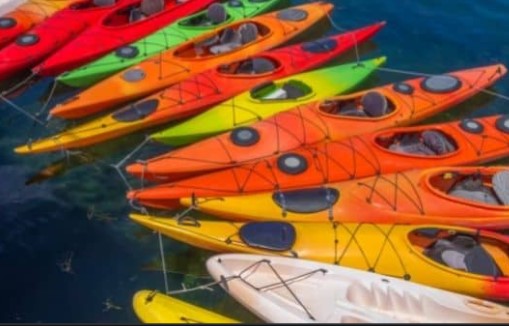Many people find it difficult to store and own a fiberglass or plastic kayak. Many kayaking enthusiasts reside in urban areas, which are limited in space and expensive housing. Many people don’t have enough space to store large hard shells, which can measure at least 10 feet long and 20 feet wide. However, kayakers who live in condos or apartments do not have to abandon their favorite activity. You can store and transport many different kayaks, such as folding, inflatable, and sectional kayaks.
The likeliest type of kayak to the standard hardshell fiberglass or plastic kayak is sectional. A sectional kayak can be disassembled into smaller sections, but it looks the same as a hard shell. A sectional kayak might be broken into three parts: the bow, cockpit, and stern. You can store the smaller pieces in a closet or put them in the back of your car.
The sections can be easily reattached to the kayak and held together with a pair of solid bolts when not in use. A sectional kayak offers the advantage of being portable and easy to store while still maintaining the same rigidity and performance characteristics as a single-piece hardshell kayak. The only difference is the fact that the sectional kayak can weigh slightly more. The sectional kayak does not have the same space as a single-piece hardshell kayak. Because of their complexity, sectional kayaks are more expensive.
The folding kayak is another popular type of kayak. Although folding kayaks are not as common today, they were trendy in the first half of the 20th Century. It was common to take a folding kayak and hop on a train to the lake for weekend paddling, especially in Europe. Major manufacturers made the first kayaks around this time. They have been around since the 1900s. A metal or wooden frame is used to make folding kayaks. The frame can also be disassembled, and a fabric skin added. The frame is placed inside the skin and then tightened until it is taut.
Inflatable kayaks are the cheapest type. Inflatable kayaks are very affordable, easy to inflate and deflate quickly, and easily packed into a small space. This kayak type has a significant problem: it lacks rigidity. Inflatable kayaks can flex more when being paddled. Some paddlers prefer a more rigid boat. Higher-end kayaks have fewer frame elements, which improve rigidity.
These kayaks can be packed and shipped so that anyone living in a city can have their kayak. These kayaks are also easier to pack and ship, making it possible for avid kayakers to have their kayaks while traveling to distant destinations.

